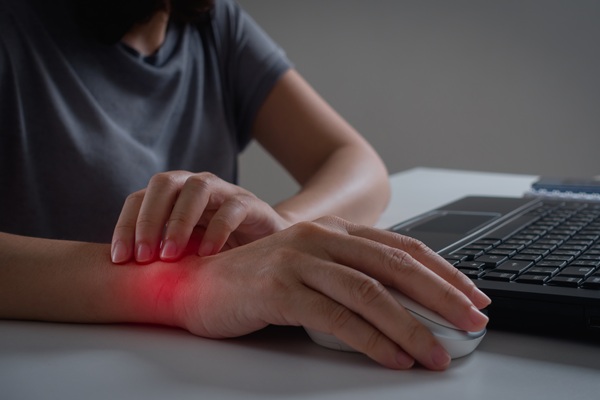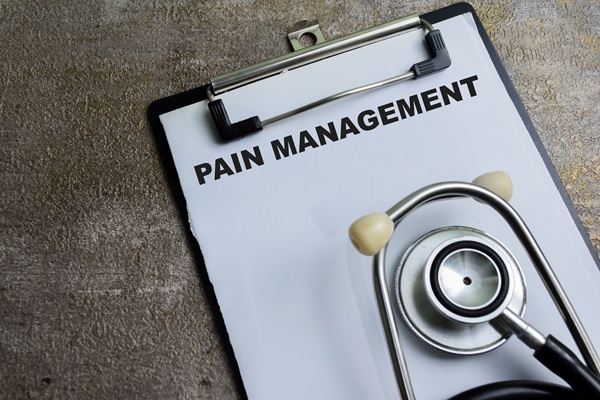Sciatica Pain TreatmentNewport Beach, CA
Sciatica, a condition that causes pain from the lower (lumbar) spine to the buttock down to the back of the leg, affects a large number of people around the world. Sciatica treatment often involves physical therapy to recondition the sciatic nerve, relieving pain and associated symptoms. Seeking immediate treatment can greatly improve your condition and help you return to normal activities without constant pain.
At Orange County Physical Therapy, we offer sciatica pain treatments for patients experiencing excessive lower back pain. Our team can identify the cause and determine the type of treatment you need to not only relieve pain but treat the root problem. To learn more about a procedure or schedule an appointment, call (949) 299-0297 today.
Understanding Sciatica
Sciatica is a sharp, radiating lower back and leg pain caused by compression of the sciatic nerve. The sciatic nerve originates in the lower back, where it branches to innervate the hip, buttocks, legs, and feet. Sciatica pain usually affects one side of the body and can extend down the back of the leg. Sciatica has been reported by up to 40 percent of the population.
Sciatic pain can cause mild to moderate or severe pain, depending on the severity of the patient’s condition. It may be consistent, arising from certain activities that put an undue amount of stress on the lower back. In most cases, patients with sciatica only feel pain on one side of their body but severe cases of the condition may result in pain on both legs.
Check out what others are saying about our Sciatica Pain Treatment services on Yelp: Sciatica Pain Treatment Newport Beach
Symptoms of Sciatica
Patients with sciatica may experience varying symptoms and degrees of pain. However, there are some common signs and symptoms of this condition, including:
- Burning or tingling sensation down the back of the leg
- Hip pain
- Lower back pain
- Pain in the buttocks or leg that is aggravated when sitting
- Persistent pain on one side of the buttocks
- Shooting pain that makes standing up difficult
- Weakness, numbness, or difficulty moving the leg or foot
Causes and Risk Factors of Sciatica
Sciatica is a condition that commonly occurs when a herniated disc or spinal stenosis pinches the sciatic nerve, called spinal stenosis. Along with other spinal conditions, pregnancy and muscle spasms can also irritate the sciatic nerve, which is well protected by thick buttock muscles.
Several individual and lifestyle factors increase a person's risk of sciatica, including:
- Being overweight
- Diabetes
- Lack of regular exercise
- Older age (also attributed to spinal changes)
- Poor working posture (driving for long periods, regularly twisting the back, or carrying heavy objects)
- Sleeping on a mattress that is too hard or too soft
- Smoking
- Wearing high-heeled shoes
Diagnosing Sciatica
To diagnose sciatica, a physical therapist will first perform a physical exam to test muscle strength, balance, and certain activities related to pain, such as walking on one’s toes or heels. Then, if sciatic nerve pain is severe enough, the patient may be required to undergo imaging (X-ray, MRI, or CT scan) to determine the exact cause of pain, such as a pinched nerve or narrow spinal canal.
Far too often, people attempt to try and wait the pain out, avoiding treatment. This will only allow the pain and related symptoms to worsen over time. By seeking professional physical therapy treatment, patients can also ensure they receive the proper diagnosis. In many cases, a primary care physician will refer a patient to undergo physical therapy after diagnosing them with sciatica.
Physical Therapy Treatments for Sciatica
The goal of treatment is to relieve pain by alleviating pressure on the sciatic nerve. Many treatment options can help reduce sciatica pain, including lifestyle changes, prescription medication, physical therapy, and surgery. At-home remedies and self-care include the use of cold or hot packs, stretching exercises, and over-the-counter pain relievers.
Additional treatments for severe sciatica include:
- Physical therapy to relax tight muscles and improve posture, flexibility, and strength
- Prescription medication, such as anti-inflammatory or anti-seizure drugs, muscle relaxants, narcotics, or tricyclic antidepressants
- Steroid injections to reduce inflammation and pain
- Surgery to repair the herniated disc or remove bone growths
Schedule a Visit Today
Consultations and treatments for sciatica pain are available at our office. The Orange County Physical Therapy team looks forward to treating you and helping reduce pain and other associated symptoms caused by sciatica. Call our office at (949) 299-0297 to learn more or schedule an appointment.
Frequently Asked Questions About Sciatica Pain
Q. What is the sciatic nerve?
A. The sciatic nerve is the largest and longest nerve that branches off the spinal cord and belongs to a group of nerves in the lower back called the lumbosacral plexus. It has both sensory and motor functions that enable actions like walking, running, climbing, and standing.
Q. Which spinal conditions can cause sciatica?
A. Several lower back problems put pressure on the sciatic nerve. Spinal conditions associated with sciatica include: Herniated disc – bulging disc material compresses the sciatic nerve; Piriformis syndrome – tightening of the muscle that connects the lower spine to the thighbones; Spinal stenosis – narrowing spinal canal due to age or bone growth; and Spondylolisthesis – one vertebra slides over another to compress the nerve.
Q. Are there any stretches I can do at home to relieve sciatic pain?
A. Stretches that externally rotate or open the hips are usually recommended to provide relief, including common yoga poses, like the reclining pigeon pose, sitting spinal stretch, or standing hamstring stretch. It is important to ease into stretches and stop if someone feels pain.
Q. What other exercises help with sciatica pain relief?
A. Yoga can help someone improve their posture, core strength, flexibility, and balance, which effectively lessen pressure on the sciatic nerve. In addition, yoga offers physical and psychological benefits of exercise and relaxation.
Q. How do lifestyle habits affect sciatica?
A. Poor health, like being overweight, diabetes, or lack of exercise, contributes to the condition of sciatica as they put additional stress on the spine or sciatic nerve. Lifestyle and habit changes can greatly improve sciatic pain and other associated symptoms. Lifestyle changes combined with physical therapy produce more optimal results.
Contact Us
Orange County Physical Therapy OCPT is located at 2135 Westcliff Dr. Suite 203 Newport Beach, CA 92660.





